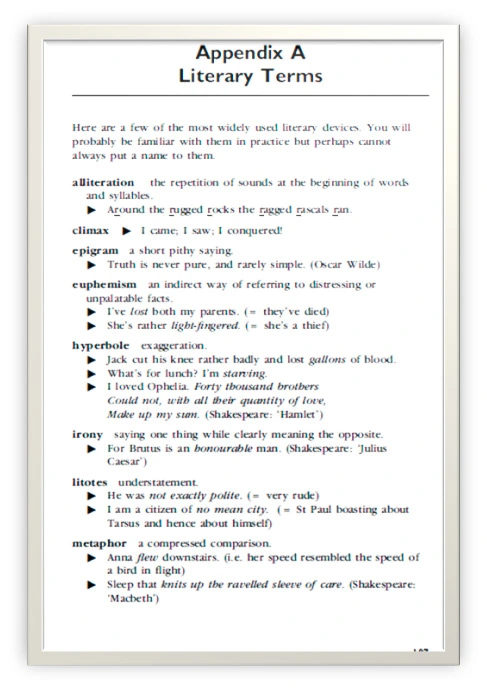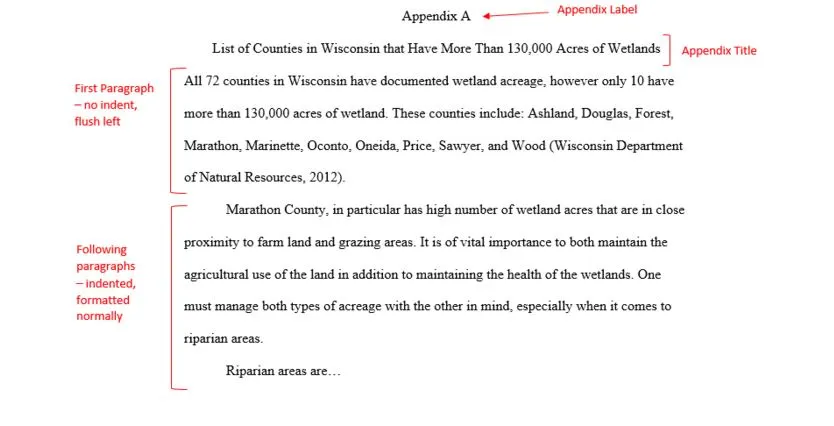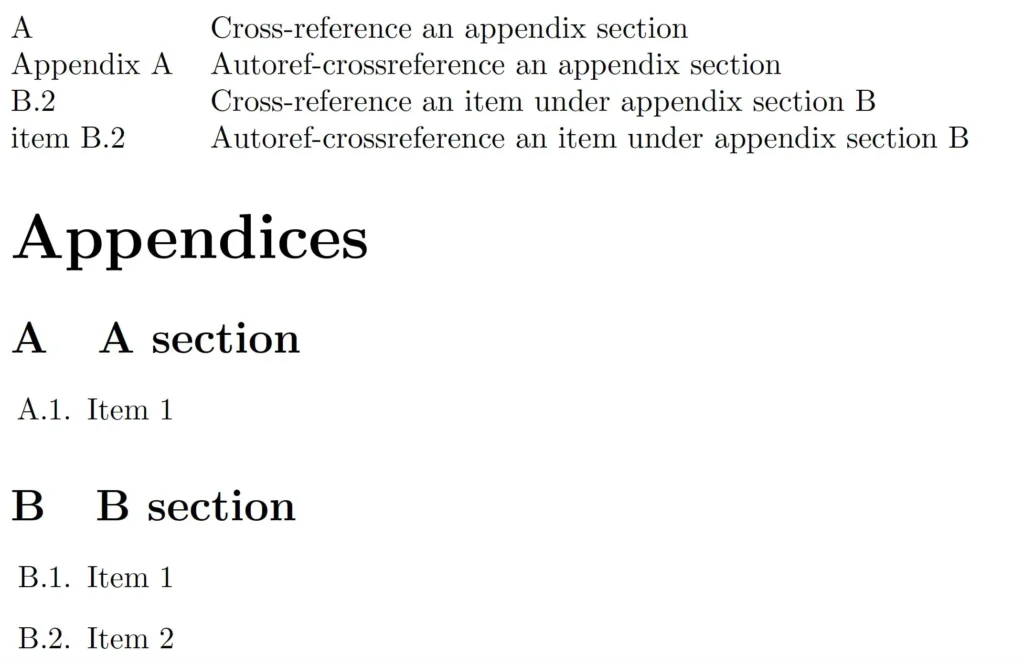Hello there! Have you ever found yourself a bit perplexed about the process of incorporating additional elements, such as charts or data, into your writing? No need to worry; you’re not alone. If you’ve been pondering how to make your documents clearer and more comprehensive, you’ve come to the right place. This blog is designed to assist you in unraveling the secrets of how to write an appendix.
Whether you’re a student aiming to excel in your assignments or a professional looking to enhance your reports, you’ve struck gold by seeking guidance here on how to make your writing more impactful through appendices.
We’ll walk you through the what, why, and how of appendices in simple terms. And hey, if you’re looking for a bit more hands-on help, consider checking out Assignment Help Australia for that extra boost in your writing game. Ready to dive in? Let’s make your documents shine!
What is an Appendix in Writings?

An appendix, whether singular or plural (Appendices), serves as an additional resource that aids readers in understanding the research without being central to the primary argument. Its purpose is to enrich the overall content by providing supplementary details or explanations, all while preventing the main paper, be it a research article, dissertation, or thesis, from becoming cluttered.
For instance, imagine you’ve conducted a detailed survey for your research. Rather than overwhelming your main text with numerous tables and responses, you can place the detailed survey forms, along with verbatim replies, in the appendices. This ensures that readers can delve into the comprehensive findings without interrupting the flow of your primary argument.
Various Data Forms in Appendices
For aspiring scholars seeking clarity on the essence of appendices, it’s vital to understand that these supplementary sections are not mere storage containers for extra information; they are dynamic components designed to enhance the comprehensibility of your research. Delving into the types of data that find a home in appendices reveals a rich tapestry of information presentation, such as graphs, tables, pictures, and definitions.
Let’s explore the varied types of information that can be strategically placed in appendices:
- Surveys: Example: Inclusion of surveys in appendices, presented exactly as provided to respondents, alongside their verbatim responses, ensuring readers gain a thorough understanding of the findings.
- Interviews: Example: Incorporation of recorded or transcribed interviews, featuring the complete set of questions and related responses, fostering transparency in the research process.
- Correspondence: Example: Researchers often append communication with collaborators, including text messages, emails, voice message transcriptions, and letters, to provide additional context related to the study’s topic.
- Tools for Research: Example: Recognition of cameras, audio recorders, specialized software, and other research equipment in the appendices, offering readers a glimpse into the tools employed during the research process.
- Non-textual Materials: Example: Utilization of appendices for non-textual materials like tables, graphs, illustrations, figures, charts, or a surplus of images, contributing to a more comprehensive understanding of the subject matter.
- Statistical Data: Example: Inclusion of both utilized and complete statistical data in the appendices, ensuring a holistic view of the research findings.
- Other Variations: Example: Appendices can also house a list glossary, date-wise case history, relevant pictures, web links, different graphs on the same topic, or a list of reference books, adding layers of richness to the supplementary materials.
How to Write an Appendix?
Let’s explore a step-by-step guide on how to cite the appendix, ensuring that you maximize their effectiveness in conveying information seamlessly.
-
Step 1: Understand the Purpose of Appendices

In simple terms, before you start using appendices in your document, it’s crucial to know why they exist and what role they play. Appendices are not just a place to throw extra information; instead, they serve a specific purpose. Think of them as tools to enhance and support your main content, giving your readers a more profound understanding of your research or document. How to Do It:
- Review Your Main Content: Carefully go through your main document. Identify areas where additional information or details might be beneficial for the reader to fully grasp your topic.
- Ask Questions: Consider what questions a reader might have while going through your main content. Are there specific terms, data points, or complex information that could use further explanation?
- Select Supporting Material: Once you’ve identified areas that could benefit from more information, choose the type of material that would best support your main content. This could include charts, graphs, surveys, interviews, or any supplementary data.
- Ensure Complementarity: The key is to make sure that the information in the appendices complements your main text. It shouldn’t be random or unrelated but rather enrich the reader’s understanding of the subject.
-
Step 2: Identify Relevant Content
In straightforward terms, once you understand why appendices are essential, the next step is to decide what specific information to include in them. It’s vital to be selective and intentional, focusing on materials that enhance and support your main content. Here’s how you can do it:
- Evaluate Your Main Content: Go through your primary document and identify areas where additional information could provide more clarity or depth. This could be data points, visuals, or any details that might benefit from further elaboration.
- Consider Supporting Data: Think about the type of information that would best support your main content. This could include tables, graphs, charts, surveys, interviews, or any supplementary material that adds value to your document.
- Prioritize Relevance: Choose content that directly contributes to a better understanding of your topic. Ensure that the material you select aligns with the main narrative and enhances the reader’s comprehension.
- Maintain Consistency: Keep a consistent theme or purpose in mind when selecting content. All information in the appendices should serve the overall goal of providing additional insight and clarity.
- Think About Accessibility: Consider the ease with which readers can access and understand the supplementary material. Ensure that the chosen content adds value without creating confusion.
-
Step 3: Clearly Label Each Appendix

In simple terms, after choosing what goes into your appendices, the next step is to label each one clearly. This ensures that readers can easily find and understand the supplementary materials. Here’s how to do it:
-
- Choose a Clear Format: Opt for a straightforward labeling format, like “Appendix A,” “Appendix B,” and so on. This makes it easy for readers to identify and locate specific appendices.
- Align with Main Text: Make sure your labeling system corresponds logically with your main text. If you reference an appendix in your writing, the label should match what’s in the appendices section.
- Consistency is Key: Maintain a consistent format throughout your document. Whether it’s the font, size, or style, keeping things uniform adds to the overall organization and readability.
- Use Descriptive Titles: Beyond just “Appendix A,” give each appendix a descriptive title. This provides a quick snapshot of what the supplementary material contains, aiding readers in finding exactly what they need.
- Consider a Table of Contents: If your document is lengthy, consider adding a table of contents for the appendices section. This gives readers an overview and makes it even easier for them to navigate.
-
-
Step 4: Order Appendices Strategically
In straightforward terms, after labeling each appendix, the next step is to organize them in a way that makes sense to your readers. This involves placing them in a logical order that follows the flow of your main document. Here’s how to do it:
- Follow Main Document Order: Arrange your appendices in a sequence that mirrors the order of references in your main text. If you refer to a specific appendix in your writing, ensure it appears in the same order in the appendices section.
- Consider Chronological Order: If your appendices include time-based or sequential information, consider ordering them chronologically. This helps readers follow the progression of events or data.
- Group Similar Content: If you have multiple appendices with similar content, consider grouping them together. This creates a sense of cohesion and makes it easier for readers to navigate related materials.
- Use Clear Headings: Each section of your appendices should have a clear heading. Whether it’s numbers, letters, or titles, use a consistent and easily understandable format.
- Refer Back to Main Text: If you reference specific appendices in your main text, ensure that the order in which they appear in the appendices section aligns with these references. This helps readers seamlessly move between the main content and supplementary materials.
-
Step 5: Title Each Appendix Descriptively
In simple terms, once you’ve organized your appendices, the next step is to provide each one with a clear and informative title. This title acts as a snapshot, helping readers understand what each supplementary section contains. Here’s how to do it:
- Be Clear and Concise: Craft titles that are straightforward and to the point. Readers should quickly grasp the content of each appendix without confusion.
- Reflect Content: Ensure that the title accurately reflects the material within the corresponding appendix. This helps set expectations and guides readers to the specific information they are seeking.
- Use Consistent Formatting: Maintain a consistent format for your titles. Whether you choose a specific font, size, or style, uniformity enhances the overall professionalism and readability of your document.
- Consider Including Dates or Numbers: If applicable, include dates or numbers in your titles, especially if your appendices contain chronological or sequential information. This aids readers in understanding the order or timeline of the content.
- Prioritize Relevance: Focus on the most relevant information when creating titles. This ensures that readers can quickly identify which appendices are essential to their understanding of the main document.
For example, if you have an appendix containing survey results, a descriptive title might be “Appendix A: Detailed Survey Responses – March 2023.” This title clearly indicates the content and context of the supplementary material.
-
Step 6: Pagination Consistency
In straightforward terms, after titling each appendix, the next step is to ensure that the pages of your appendices are numbered consistently. This means using the same numbering style as the rest of your document. Here’s how to do it:
- Choose a Numbering Style: Decide on a numbering style for your document, whether it’s Arabic numerals (1, 2, 3), Roman numerals (I, II, III), or another format. Stick to the style you’ve used in the main document.
- Start with Clear Labels: If your appendices have their own section, start the page numbering with a clear label like “Page A-1” or “Page I-1” to indicate the beginning of the appendices section.
- Continue the Sequence: If your main document has sequential page numbers, continue that sequence into the appendices. This helps readers navigate seamlessly between the main content and supplementary materials.
- Include Appendices in Table of Contents: If your document includes a table of contents, make sure it encompasses the appendices section with accurate page references.
For instance, if your main text ends on page 50, the first page of your appendices could be labeled “Page A-1” or “Page 51,” depending on your numbering style. This way, readers can easily cross-reference between the main document and the appendices.
-
Step 7: Format Uniformity

In simple terms, once your appendices are paginated, the next step is to make sure they all look the same in terms of appearance. Consistency in font, spacing, and margins contributes to a polished and professional presentation. Here’s how to achieve format uniformity:
- Choose a Standard Font: Stick to one standard font throughout your appendices. Common choices include Arial, Times New Roman, or Calibri. This creates a cohesive and professional look.
- Maintain Font Size Consistency: Ensure that the font size is the same across all appendices. A typical font size for documents is 12-point, but choose one that is clear and readable.
- Use Uniform Spacing: Keep the spacing consistent. If you use double-spacing or 1.5-line spacing in your main document, maintain the same spacing in the appendices. This creates a visually appealing and organized layout.
- Set Standard Margins: Establish uniform margins on all sides of each page in your appendices. Standard margins are often 1 inch on all sides, but check your style guide or document requirements for any specific instructions.
- Apply a Cohesive Layout: Ensure that the layout of each appendix follows the same structure. If you use headings, bullet points, or other formatting elements in one appendix, replicate these choices in the others for a unified appearance.
- Check for Consistent Indentation: If you use indentation for paragraphs or lists, maintain the same indentation style throughout. This ensures a neat and organized look.
For example, if your main document is in Arial font with 1.5-line spacing and 1-inch margins, ensure that your appendices follow the same specifications.
-
Step 8: Referencing in the Main Text
In simple terms, after ensuring uniform formatting, the next step is to seamlessly refer to your appendices within the main text of your document. This involves guiding readers to the supplementary material when needed. Here’s how to do it:
- Identify Relevant Points: While writing your main content, identify points where additional information in the appendices would be beneficial. This could include referencing specific data, charts, graphs, or any content that adds depth to your main arguments.
- Use Clear Indicators: When you reach a point that requires reference to the appendices, use clear indicators. This could be phrases like “Refer to Appendix A for detailed survey results” or “See Appendix B for supporting charts.”
- Include In-Text Citations: If you’re directly quoting or paraphrasing information from the appendices, use in-text citations as you would for any other source. This maintains academic integrity and guides readers to the exact location in the appendices.
- Create Smooth Transitions: Integrate references naturally into your text to create smooth transitions. Avoid abrupt or forced mentions of the appendices; instead, make it feel like a natural extension of your discussion.
- Provide Context: Before or after the reference, briefly provide context to explain why readers should turn to the appendices. This helps them understand the relevance and purpose of the supplementary material.
For example, if discussing survey results, you might write, “As discussed earlier, the survey outcomes indicated a strong preference for our product (see Appendix C for the detailed survey questions and responses).”
[You may also check out: Importance of Referencing in Academic Writing]
-
Step 9: Review for Relevance
In simple terms, after referencing your appendices in the main text, the next crucial step is to thoroughly review each piece of content within the appendices. This ensures that everything included directly contributes to your main document, maintaining focus and relevance. Here’s how to do it:
- Understand Main Document Themes: Revisit the key themes and arguments in your main document. This will provide a clear understanding of what supplementary material is essential for supporting your main points.
- Evaluate Each Appendix: Go through each appendix and critically evaluate its content. Ask yourself if the information directly contributes to and enhances the understanding of your main thesis or research.
- Check for Redundancy: Avoid redundancy by ensuring that the information in your appendices doesn’t duplicate what’s already in the main document. Each piece of content should add something new or provide additional context.
- Remove Unnecessary Material: If you come across any material that doesn’t directly contribute to your main argument, consider removing it. Irrelevant content can distract readers and dilute the impact of your document.
- Verify Consistency: Double-check that the content in your appendices aligns with the information referenced in the main text. Consistency ensures that readers find what they expect when turning to the appendices.
For example, if your main document discusses the results of a survey, ensure that the appendix containing the survey data aligns with and supports the information provided in the main text.
-
Step 10: Ensure Contextual Linkage
In straightforward terms, the final step in managing your appendices is to confirm that each piece of data within them has a clear connection to the main context of your document. It’s crucial to avoid any disconnect that might confuse readers or examiners about the relevance of the supplementary material. Here’s how to do it:
- Understand Main Content: Have a solid understanding of the key themes and arguments in your main document. This will serve as a reference point when evaluating the contextual linkage of your appendices.
- Cross-Check with Main Text: Go through each piece of data in the appendices and cross-check it with the information in your main text. Ensure there is a clear and logical connection between what’s discussed in the main document and the supplementary material.
- Provide Clear References: If there are specific points in your appendices that directly relate to discussions in the main text, provide clear references. This could be through in-text mentions or footnotes that guide readers to the relevant appendices.
- Maintain Consistent Terminology: Ensure that the terminology used in the appendices aligns with that in the main text. Consistency in language enhances understanding and reinforces the connection between the two sections.
- Check for Logical Flow: Evaluate the logical flow between the main document and the appendices. Readers should be able to seamlessly transition between the two without feeling a disjointed or abrupt shift.
For example, if your main text discusses a specific case study, make sure that the detailed case study data in the appendices aligns with the information presented in the main content.
In conclusion,
Delving into the intricacies of appendix writing empowers you to elevate the caliber and influence of your documents. Following the steps outlined in this guide, you can adeptly incorporate supplementary materials, ensuring your audience gains a comprehensive and robust comprehension of your work. As you embark on your appendix-writing journey, may this guide serve as a compass, navigating you through the nuances and fostering clarity in your academic or professional pursuits.
Best of luck in seamlessly enriching your content and leaving an indelible impression on your readers!!


